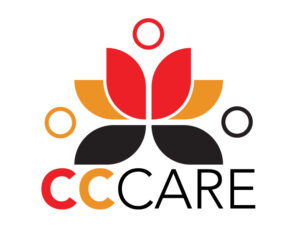By Venta Rutkauskas
To commit to a place, a community, or a landscape, there comes a time when we are called to stand up and defend it—to act in accordance with our values and reciprocate support. From this place where I write, in Northern Secwepemcúl’ecw, I have recognized a call to learn, to understand what it is to be a responsible visitor to the territory. Part of this action involves social justice and equity movements that advocate for the wellness of our community with a focus on anti-racism study. Deeply supportive and transformational educators recognize that sensory awareness and an intelligence of feeling and knowing housed in our complex tissues and neural pathways provides an anchor for our society’s needed transformation. We’ve really uplifted the mind over our bodies and learned to disengage from the powerful feelings that arise when we harm the environment or each other. Without the body’s wisdom and healing, we will struggle to develop true equity and compassionate societies that support everyone.
Somatic practices have been a part of learning in all cultures. They centre lived experience and self-regulation skills, resources that help us manage our behaviours. But many of us have been living in highly developed technological and consumer cultures that discount the wisdom of nature, sensation, or satiety. With that in mind, maybe a concerted effort is required to re-orient and strengthen the ability to work with sensations, especially those which bring forth discomfort. Somatic practices encourage what the Eastern philosophies describe as non-attachment, neither grasping nor repelling the experiences we have. We learn to stay with it. The social justice movements using somatic practices view them as crucial and foundational work required to address the issues that are so connected to the body, like our internal biases and instinctual reactions.
‘Stay’ asks us to build a capacity in the body-mind, in the nervous system, an ability to regulate and endure because we know there are going to be tough times. So, let’s build an awareness and then orient that knowing toward the need for systems change and compassionate action. In my heart, I believe this is the beauty way, a fully embodied presence ready and willing to uplift.
It can be very uncomfortable for many of us white-bodied settlers to hear that we benefit from a system of organized supremacy. I also believe that racialized bodies are deeply uncomfortable existing in the systems that have organized around supremacy. Imagine, too, the felt sense of an Indigenous community member, when resource-extraction-driven governments and corporations maintain an agenda to break down and dispossess them of their traditional ecosystems, which are intrinsically bound to their emotional and spiritual culture and practices. Be with any imagery, any sensations differentiating themselves around your body as you read this. Stay. Feel your emotions and feel your feet on the ground. Breathe. Can you discover a pathway that allows you to be ‘in place’, that a heart-centred response may create a personal action toward a compassionate society?
My work has been influenced by mentors and teachers in racialized bodies. Sometimes I encounter folks who worry or counter that we are spending too much time separating ourselves into tribal identity politics, stoking division over unity or causing the loss of children’s innocence. I hear it and I feel it, too. The struggle to do the right thing wades through all the voices in the conversation, locally, nationally, and globally. Often, I don’t know the next best step or what to do.
When I give myself the time to practice, my body offers a message, through gut, through chest and eyes: I want to listen and believe and act on the words of those who are not experiencing equity.
As this movement gains momentum, so, too, do the resources for learning and experiencing with mindful and wise guides. Resmaa Menakem’s acclaimed work grounds somatic practices as a healing pathway to racial equity (see My Grandmother’s Hands at resmaa.com). Ta7talíya Michelle Nahanee (decolonizeeverything.org), Selam Debs (selamdebs.com/about), Rachel Ricketts (rachelricketts.com/online-courses), and authors and activists all over the globe provide frameworks for whole-self practices that awaken full awareness in context to social justice work. I have been fortunate to find a group willing to instill somatic anti-racism into our local advocacy. Thank you to the committed members of Cariboo Chilcotin Collaborative for Anti-racism and Reconciliation Engagement (CC CARE) for holding that space.
Maybe you, too, will be curious about somatic practice and approaches to social justice work. If you are a racialized body, this could be the pathway to releasing from all you’ve had to carry; if you are a white body, somatic abolition assists the endurance and willingness to stay with the deeply troubling truths about systems that benefit us and harm others, then act to change them. There are barriers to bringing equity to society, some of which live inside of our very selves. Let us not forget the beauty way.
Venta Rutkauskas is an arts organizer, integrative energy healing practitioner, and writer living on unceded Secwepemc Territory near T’exelc. To learn more about local advocacy in anti-racism and Cariboo Chilcotin CARE, find this group on Facebook.


